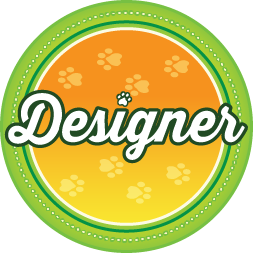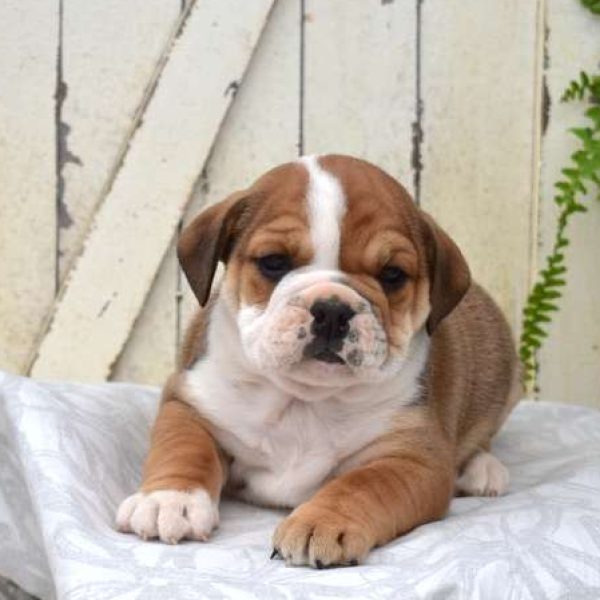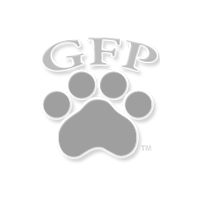
-
Activity Level:
moderate
-
Shedding Level:
high
-
Grooming Level:
moderate
-
Trainability:
moderate
-
Good for Novice Owners:
moderate
-
Adaptability:
high
-
Kid/Pet Friendly:
often
-
Prey Drive:
moderate
-
Watchdog:
very alert
- Average Size: Medium
- Average Lifespan: 10-13 years
- Registered?: other
Beabull Dog Breed Information
Overview
Temperament
Adaptability
Health
Owner Experience
Grooming
Activity Level
Size
Life Span
Did You Know?
The exceptional personalities of both the Beagle and the English Bulldog are merged in the Beabull, a superb family dog and low-maintenance companion for even the novice dog owner. The two breeds, which make up the Beabull, were extremely popular in Europe and the U.S. during the 19th century for their hunting skills. When those qualities outgrew their usefulness in the 20th century, the Beabull offered a more modern and family-friendly alternative for this extraordinary gene pool.
The Beagle’s gentle nature is mixed with the Bulldog’s affection and courageous tenaciousness in the Beabull. The Beabull’s interesting personality is due, at least in part, to the tough assuredness of the English Bulldog and the playful cleverness of the Beagle. The progenitors of the Beabull are known for their loyalty, affection, protectiveness, and eagerness to please, making for a classic companion and a true “man’s best friend.”
Although the Beabull is not recognized by the American Kennel Club, they are recognized by other dog registries and organizations. The Designer Breed Registry, Designer Dogs Kennel Club, American Canine Hybrid Club, and more all recognize the Beabull.
The temperament of the Beabull is determined by its parents and the ongoing socialization and training they are given. The Beabull is not often 50% Beagle and 50% English Bulldog, but rather, some dominant percentage of one of those breeds, due to the multi-generational breeding process.
Individual Beabulls can be more mischievous and rambunctious with bursts of hyperactivity, while others may be quietly watchful, alert, and affectionate. Either way, the Beabull tends to be a friendly, good-natured, and loyal family dog. They are very intelligent and very devoted companions. Your Beabull is likely to follow you wherever you go. Around the house, they are known to be couch potatoes if there’s nothing special going on.
Some Beabulls are very easygoing. Some Beabulls, who are especially Beagle-dominant, will have a comical quality about them. They are also very affectionate and might climb into your lap. They do tend to be initially wary of strangers and may be aloof with them until introduced, but they do tend to warm up, provided they have been properly socialized.
They also tend to bark to alert you and can be prone to barking a lot, especially if they have been unintentionally trained into it. It’s not a bad idea to train your dog to stop barking as you are socializing and training them to help keep this behavior to alert barking.
The Beabull is a highly adaptable dog that does well in all kinds of environments. They are sporty as well as great house pets. They do well in most climates, but, as with any dog, do not typically do well in extreme hot or cold. They also tend to be more sensitive to heat.
They will adapt to apartment living or homes with fenced-in yards where they can run. They can keep up with an active family, but can also adapt to the lifestyle of a family that is less active. Engagement and mental stimulation are key to keeping your dog from getting bored and becoming destructive.. As dogs that bond closely with their people and thrive on attention and affection from them, Beabulls do not like to be alone for long periods of time.
Although mixed-breed dogs can sometimes be healthier than their purebred counterparts, it’s not a guarantee. A mixed-breed dog can inherit potential health concerns related to one, none, or both of their parent breeds. Potential health concerns to be aware of in Beabulls can include intervertebral disk disease, eye problems, epilepsy, hypothyroidism, patellar luxation, Beagle Dwarfism, and hip dysplasia.
Good breeding practices and the health of the parents make a big difference in the health of Beabull puppies. Reputable breeders will screen their dogs to make sure preventable issues are not being passed to puppies. Asking the breeder about the genetic history of the parents and about any health clearances or tests that have been done can help allay potential health concerns.
Like most highly intelligent breeds, the Beabull is happiest when they are mentally stimulated. A bored Beabull might try to create their own fun by getting into mischief. Owners who derive satisfaction from engaging in interesting activities with their dogs will find a perfect fit with the Beabull.
Playtime with challenging games and toys can help keep your Beabull engaged. Although they are known to have a stubborn streak, they are, generally, easily trained. Caution should be taken with a particularly clever Beabull, who will try to outsmart you for extra treats. Because of that stubborn streak, Beabulls tend to be a better fit for more experienced owners. They can be a good fit for novice owners as long as puppy training classes are part of the process.
Beabulls can be noisy dogs, especially when emitting a powerful Beagle howl. Owners with children are especially pleased to have this playful, devoted, and protective pet to engage with their kids. However, they can exhibit bursts of high-energy behavior and may also nip in their excitement. Socialization, training your puppy to stop biting, and engaging in other training early on can help curb any behaviors that might be unwanted once your Beabull is fully grown.
The Beabull’s coat is soft on the sides and coarse on top. They don’t require the frequent grooming of the long-haired breeds. However, they are heavy shedders and require frequent brushing just to collect their copious amounts of fur. Brushing a few times a week is usually enough, but your Beabull will probably enjoy the attention if you want to brush them every day. A rubber brush and a grooming glove are good types of dog grooming brushes to have on hand for handling a Beabull’s short coat.
Beabulls tend to like the water, so bathing shouldn’t be an issue. It’s important to work with your Beabull early on so they enjoy their baths, or at least are manageable when you have to bathe them. Start by encouraging their cooperation and rewarding them for doing a good job getting washed. You do only want to bathe them as needed. Bathing too frequently can cause your Beabull to have dry skin.
In addition to coat care, you will also need to take care of your Beabull’s nails, ears, teeth, and wrinkles, if they inherit the classic Bulldog wrinkles. Cutting your dog’s nails once or twice a month is usually enough to keep them from growing too long. The Beabull’s floppy ears are also more prone to developing ear infections, so make sure you check their ears weekly and carefully clean them if needed. Brushing your dog’s teeth daily, along with cleanings at the vet when needed, is ideal to prevent tartar buildup and reduce the risk of dental problems later in life.
While checking their ears, it’s not a bad idea to also look over, wipe, and clean the Beabull’s wrinkles, if they inherited them. Like their Bulldog parents, their wrinkled skin should be checked periodically for parasites, irritation, and other skin problems in dogs. Making sure these areas stay clean and dry can prevent skin issues and make your Beabull more comfortable.
The Beabull is a working dog that can inherit the Beagle’s prey drive and urge to follow scents and chase. Redirecting them into appropriate play and making sure they get enough exercise are some tips for managing prey drive in dogs that can help direct and manage a Beabull’s energy.
They don’t always need to be kept busy and active, but they are energetic dogs that still need plenty of exercise every day. However, if they are brachycephalic dogs, like their Bulldog parent, they will be sensitive to heat and prone to overheating. If this is the case, working in short bursts and taking breaks are ways to safely exercise flat-faced dogs.
Although they sit in a more moderate activity range, Beabulls tend to have bursts of exuberant energy, especially when they are younger. They are known to have sudden bursts of energy, which can look like hyperactivity. Provided you give them enough exercise and redirect their energy into positive channels, they will tire themselves out and be ready to relax soon enough.
Over time and with good training, they will settle down a little and channel their energy into acceptable activities once they understand what is expected of them. Some family playtime and daily walks with their favorite people are usually enough to keep them happy and healthy. They are able to amuse themselves in a securely fenced-in backyard. But, be aware that a Beabull’s curious nature may cause some mischief, so you don’t want to leave them unsupervised for too long, even if you have a dog-friendly backyard.
Fully-grown Beabulls usually stand 12-16 inches tall and weigh 30-60 pounds. With a mixed-breed, there can be some variation. Although it’s not a guarantee, looking at the size of the parents can give you some idea of what size to expect in your Beabull.
A Beabull will generally live for 10-13 years on average.
Not all Beabulls look like Bulldogs. Although some of them inherit the Bulldog wrinkles and snub nose, Beabulls that take more after their Beagle parent may not be considered brachycephalic dogs and may not have the extra considerations for flat-faced dogs.






